
We are all waiting for the results. Who won?
Could it have been The Grand Flames ?
Yep!
Congatulations on your victory!
[JTL Home] [Overall Results Women] [Men's Division Results] [Women's Division Results]Official Results by:
JTL Timing SystemsQueen Liliuokalani Long Distance Canoe RaceSeptember 5, 2009 - Kailua-Kona, Hawaii
Overall Results - Men
Place Name Division Time
1 Team Primo #2 Iron Open NK 1:52:34
2 Livestrong Iron Open NK 1:55:14
3 Team Primo #1 Iron Open NK 1:57:10
4 Outrigger Canoe Club #4 Iron Open NK 1:58:06
5 Kailua Canoe Club #2 Iron Open NK 1:58:26
6 Kai Opua #9 Iron Open NK 1:59:14
7 Team Steine Iron Open NK 2:00:15
8 Keauhou/Livestrong Iron Open NK 2:00:43
9 Kamehameha CC-Hilo #3 Iron Open NK 2:00:52
10 Kailua Canoe Club #1 Iron Open NK 2:01:19
11 Hui Lanakila #4 Iron Open NK 2:02:13
12 Namolokama #2 Iron Open NK 2:03:02
13 Hui Lanakila #7 Iron Open Koa 2:03:16
14 Outrigger Canoe Club #7 Iron Open NK 2:03:18
15 Keaukaha Canoe Club #4 Hawn Racers 2:04:01
16 Leeward Kai Canoe Club #2 Iron Open NK 2:04:21
17 Keauhou Canoe Club #10 Iron Open Koa 2:04:47
18 Hui Lanakila #6 Iron Open NK 2:04:54
19 Kailua Canoe Club #6 Sr Masters 2:05:08
20 Waikoloa Canoe Club #5 Non Tradition 2:05:15
21 Waikiki Beach Boys #8 Iron Open NK 2:05:20
22 Keauhou Canoe Club #2 Masters 2:06:00
23 Puna Canoe Club #1 Iron Open Koa 2:06:18
24 Hong Kong Island #2 Iron Open NK 2:06:47
25 Keahiakahoe/Team Bradley Sr Masters 2:06:49
26 Na Kai Ewalu Iron Open NK 2:07:05
27 Tui Tonga #1 Iron Open Koa 2:07:19
28 Italy Iron Open NK 2:07:24
29 Kailua Canoe Club #3 Iron Open NK 2:07:25
30 Kai Opua #6 Masters 2:08:11
31 Namolokama #1 Iron Sr Mstrs 2:08:39
32 Kai Opua #11 Iron Open Koa 2:09:10
33 Tui Tonga #2 Hawn Racers 2:09:28
34 Kai Opua #2 Iron Open NK 2:09:44
35 Kamehameha CC-Hilo #4 Iron Open NK 2:09:49
36 Leeward Kai Canoe Club #1 Iron Open NK 2:09:51
37 Keoua #3 Iron Open Koa 2:10:10
38 Healani Canoe Club Iron Open NK 2:10:48
39 Kona Athletic Club #3 Unofficial 2:11:02
40 Hui Nalu Canoe Club #4 Iron Open NK 2:11:11
41 Team Honoura Iron Open Koa 2:11:26
42 Lae Ula O Kai #3 Iron Open NK 2:11:29
43 San Diego Beach Boys Iron Mstrs NK 2:11:31
44 Kailua Canoe Club #5 Masters 2:12:01
45 Kai Opua #4 Iron Open NK 2:12:25
46 Waikiki Surf Club #3 Hawn Racers 2:12:35
47 Kai Opua #5 Hawn Racers 2:13:02
48 Outrigger Canoe Club #5 Iron Open Koa 2:13:08
49 Hui Lanakila #5 Iron Open NK 2:13:35
50 Waikiki Beach Boys #9 Iron Open NK 2:13:52
51 Great Lakes Brigade Iron Gr Mstrs 2:13:55
52 Singapore Paddle Club (red) Iron Open NK 2:14:19
53 Keauhou Canoe Club #9 Sr Masters 2:14:22
54 Na Waa Hankahi CC #2 Hawn Racers 2:14:24
55 Koa Kai #2 Iron Mstrs NK 2:14:25
56 Kukio Unofficial 2:14:32
57 Alakai Nalu Iron Open NK 2:15:20
58 Lanakila California OCC Iron Sr Mstrs 2:15:32
59 Kaneohe Canoe #2 Iron Open NK 2:16:05
60 Waimanalo #1 Sr Masters 2:16:16
61 Kawaihae #5 Hawn Racers 2:16:34
62 Pacific Reach #2 Iron Open NK 2:16:55
63 Namolukama O Hanalei #2 Iron Open NK 2:17:11
64 Kamehameha Canoe Club-Oahu #2 Iron Open NK 2:17:20
65 Na Waa Hanakahi CC #1 Masters 2:17:38
66 Puuwai #2 Iron Mstrs NK 2:19:15
67 Ka Mamalahoe Canoe Club #4 Iron Open NK 2:19:18
68 Keauhou Canoe Club #8 Sr Masters 2:19:24
69 Kawaihae #4 Iron Mstrs NK 2:20:16
70 Santa Barbara OCC #3 Non Tradition 2:20:21
71 Easter Seals Iron Open NK 2:20:41
72 Waimanalo #2 Iron Mstrs NK 2:20:42
73 Waikiki Beach Boys #10 Iron Open NK 2:20:57
74 Singapore Paddle Club (black) Iron Open NK 2:21:12
75 Kahakai California Masters 2:21:33
76 Anuenue Canoe Club #2 Iron Gr Mstrs 2:22:08
77 Keauhou Canoe Club #7 Grand Masters 2:22:10
78 NAC Iron Open Koa 2:22:49
79 Keahiakahoe CC #2 (white) Iron Mstrs NK 2:23:42
80 Hui Nalu Canoe Club #3 Iron Gldn Mstr 2:24:07
81 Kihei Canoe Club Iron Gldn Mstr 2:24:13
82 Waimanalo #3 Iron Open NK 2:24:32
83 Keahiakahoe CC #3 Iron Sr Mstrs 2:24:38
84 Keahiakahoe CC #1 (black) Iron Mstrs NK 2:24:50
85 New Hope Iron Open NK 2:25:05
86 Keahiakahoe CC #4 Grand Masters 2:25:35
87 Mana`e Canoe Hawn Racers 2:25:46
88 Keaukaha Canoe Club #2 Sr Masters 2:25:49
89 Imua Canoe Club Iron Gr Mstrs 2:26:01
90 Santa Barbara OCC #5 Iron Open NK 2:26:11
91 Outrigger Canoe Club #6 Iron Gr Mstrs 2:26:58
92 Hui Wa'a O Wakinikona Iron Gr Mstrs 2:27:15
93 Team Three Man Unofficial 2:27:19
94 Alapa Hoe #2 Iron Mstrs NK 2:27:20
95 North Shore Canoe Club #2 Iron Open NK 2:27:46
96 Keoua #2 Iron Gldn Mstr 2:28:06
97 Ka Mamalahoe Canoe Club #5 Iron Open NK 2:28:37
98 Shonan Canoe Club #2 Iron Mstrs NK 2:28:42
99 Honolulu Pearl Club #2 Non Tradition 2:28:52
100 Alapa Hoe #3 Iron Open NK 2:28:56
101 Keoua #1 Iron Sr Mstrs 2:29:29
102 Waikiki Yacht Club #2 Iron Open NK 2:29:59
103 Naleo O Ke Kai #1 Iron Open NK 2:30:03
104 Kailana Canoe Club Iron Open Koa 2:30:13
105 Ikuna Koa #1 Iron Mstrs Koa 2:30:13
106 Kai Poha Canoe Club #4 Iron Mstrs NK 2:31:32
107 Hui Waa California #2 Iron Gr Mstrs 2:32:04
108 Lanakila Iki Canoe Club #1 Iron Mstrs NK 2:32:23
109 Kai Opua #1 Grand Masters 2:32:30
110 Ke Kai O`Uhane #1 Iron Mstrs NK 2:32:48
111 Ikuna Koa #2 Iron Open NK 2:33:38
112 Kai Ehitu Iron Open NK 2:34:11
113 Lanikai Iron Mstrs Koa 2:35:35
114 Kai Poha Canoe Club #3 Iron Open NK 2:36:32
115 Hawaiian OCC Yakoska Japan #2 Iron Sr Mstrs 2:36:34
116 Newport Outrigger #1 Iron Open NK 2:37:29
117 Hawaiian OCC Yakoska Japan #1 Iron Open NK 2:37:51
118 Texas Outrigger #2 Iron Open NK 2:38:16
119 Waikoloa Canoe Club #4 Iron Mstrs Koa 2:39:01
120 Newport Outrigger #2 Iron Gldn Mstr 2:39:56
121 Pukana O Ke Kai Iron Open NK 2:40:13
122 Hui Lokahi O Ke Kai #1 Iron Open NK 2:40:33
123 Beach Hayama #1 Iron Open NK 2:40:40
124 FCRCC #2 Iron Gldn Mstr 2:41:36
125 Paddlers Of Laka Hawn Racers 2:41:46
126 Autumn Rose Canoe Club #2 Iron Open NK 2:43:07
127 Kalihi Kai Iron Open NK 2:44:27
128 Anuenue Canoe Club #1 Iron Gr Mstrs 2:46:55
129 Benicia OCC #1 Iron Gldn Mstr 2:47:49
130 Keaukaha Canoe Club #3 Grand Masters 2:48:20
131 Kamehameha CC-Hilo #5 Iron Gr Mstrs 2:54:20
132 Pure Light Racing Unofficial 3:12:03
[Overall Results Men] [Men's Division Results] [Women's Division Results]Queen Liliuokalani Long Distance Canoe RaceSeptember 5, 2009 - Kailua-Kona, Hawaii
Overall Results - Women
Place Name Division Time
1 Hui Lanakila #2 Iron Open NK 2:12:16
2 Waikiki Beach Boys #1 Iron Open NK 2:13:20
3 Waikiki Beach Boys #2 Iron Open NK 2:14:04
4 Kai Opua #3 Iron Open NK 2:16:54
5 Outrigger Canoe Club #1 Iron Open NK 2:19:17
6 Hui Lanakila #3 Iron Open Koa 2:20:15
7 Hawaiian Canoe Club #1 Iron Open NK 2:22:22
8 Waikiki Beach Boys #3 Iron Open NK 2:22:50
9 Outrigger Canoe Club #2 Iron Open Koa 2:23:58
10 Akarana Iron Open NK 2:24:36
11 Keauhou Canoe Club #3 Iron Open Koa 2:24:59
12 Namolokama #3 Iron Mstrs NK 2:26:39
13 Hanalei #2 Hawn Racers 2:27:11
14 Hawaiian Canoe Club #2 Iron Open NK 2:27:16
15 Kai Opua #8 Iron Open Koa 2:28:12
16 Hui Lanakila #1 Iron Open NK 2:28:38
17 Lae Ula O Kai #2 Iron Mstrs NK 2:28:51
18 Lae Ula O Kai #1 Iron Open NK 2:29:26
19 Waikiki Beach Boys #5 Iron Open NK 2:29:34
20 Puna Canoe Club #2 Iron Open Koa 2:29:58
21 Outrigger Canoe Club #3 Iron Open NK 2:30:09
22 Patterson Lakes Outrigger Iron Open NK 2:30:28
23 Kahana #1 Iron Open NK 2:30:45
24 Waikiki Beach Boys #4 Iron Open NK 2:30:51
25 Kaiola #2 Iron Open NK 2:30:51
26 Kai Opua #10 Iron Mstrs Koa 2:31:18
27 Puna Canoe Club #4 Iron Mstrs NK 2:31:34
28 Kahana #2 Iron Open NK 2:31:48
29 Oceanside Outigger Iron Open NK 2:32:14
30 Kona Athletic Club #2 Unofficial 2:33:06
31 Kai Opua #7 Hawn Racers 2:33:21
32 Kona Athletic Club #1 Iron Mstrs Koa 2:33:46
33 Santa Barbara OCC #1 Iron Open NK 2:34:04
34 Waikiki Surf Club #1 Iron Open NK 2:35:21
35 Cronulla Outrigger Canoe Club Iron Open NK 2:35:34
36 Team Ray Iron Open NK 2:35:36
37 Hawaiian Canoe Club #3 Iron Open NK 2:36:56
38 Keauhou Canoe Club #6 Sr Masters 2:37:09
39 Puuwai #1 Iron Mstrs NK 2:37:35
40 Kukui Canoe Club Iron Open NK 2:37:48
41 Na Waa Hanakahi CC #3 Hawn Racers 2:37:56
42 Marina Del Rey #1 Iron Open NK 2:38:05
43 Waikoloa Canoe Club #1 Non Tradition 2:38:17
44 Waikiki Beach Boys #6 Iron Open NK 2:38:32
45 Northern Beaches Outrigger CC Iron Open NK 2:38:58
46 Marina Del Rey #2 Iron Open NK 2:39:14
47 Kamehameha CC-Hilo #1 Masters 2:39:36
48 NCA Outrigger Iron Mstrs Koa 2:39:43
49 Hui Nalu Canoe Club #1 Iron Open NK 2:39:59
50 Kamehameha CC-Hilo #2 Iron Open NK 2:40:05
51 Kawaikini Canoe Club #2 Iron Open NK 2:40:17
52 Hong Kong Island #1 Iron Open NK 2:40:23
53 Puna Canoe Club #3 Iron Mstrs NK 2:41:22
54 Santa Barbara OCC #2 Iron Open NK 2:41:23
55 Team Kalakoa Iron Open NK 2:42:04
56 Keauhou Canoe Club #1 Hawn Racers 2:44:46
57 Hui Nalu Canoe Club #2 Iron Open NK 2:45:13
58 Keauhou Canoe Club #5 Iron Open NK 2:45:28
59 Kai Opua #12 Grand Masters 2:45:32
60 Leeward Kai #1 Iron Open NK 2:45:53
61 Kawaihae #2 Iron Mstrs Koa 2:46:08
62 Kailua Canoe Club #4 Hawn Racers 2:46:18
63 Keauhou Canoe Club #4 Iron Open NK 2:46:22
64 Waikoloa Canoe Club #3 Iron Open Koa 2:46:57
65 Kawaihae #3 Iron Open NK 2:47:15
66 Kawaikini Canoe Club #1 Iron Open NK 2:47:39
67 Team Medusa Iron Open NK 2:47:46
68 Ka Mamalahoe Canoe Club #2 Iron Open NK 2:48:11
69 Waikiki Beach Boys #7 Iron Open NK 2:49:25
70 Puna Kailani Iron Gldn Mstr 2:49:44
71 Team Golden Girls Iron Mstrs Koa 2:50:24
72 Shonan Canoe Club #1 Iron Open NK 2:50:25
73 NCAWPA Iron Gldn Mstr 2:50:28
74 Waimanalo #5 Iron Open NK 2:50:40
75 Newport/Wailea Iron Open NK 2:50:42
76 Waikoloa Mamalahoe Masters 2:50:55
77 Pacific Reach #1 Iron Open NK 2:51:18
78 Honolulu Pearl Club #1 Non Tradition 2:51:34
79 Kai Poha Canoe Club #1 Iron Open NK 2:51:44
80 Lanakila Iki Canoe Club #2 Iron Open NK 2:51:56
81 Hui Lokahi O Ke Kai #2 Iron Open NK 2:52:15
82 Hawaiian Canoe Club #4 Grand Masters 2:52:15
83 Kona Athletic Club #4 Non Tradition 2:52:42
84 Koa Kai #1 Iron Open NK 2:52:56
85 Hanalei #1 Iron Open NK 2:53:00
86 Waikoloa Canoe Club #2 Iron Open NK 2:53:48
87 Ka Mamalahoe Canoe Club #3 Iron Open NK 2:54:03
88 Leeward Kai #2 Iron Open NK 2:54:19
89 Kaneohe Canoe Club #1 Iron Mstrs NK 2:54:30
90 Team Arizona Iron Open NK 2:55:00
91 Mano O Ke Kai Masters 2:55:24
92 Alapa Hoe #1 Iron Open NK 2:56:35
93 Waimanalo #4 Iron Open NK 2:56:43
94 Off Shore Iron Open NK 2:57:08
95 Kali Kai Kono Iron Open Koa 2:57:57
96 Autumn Rose Canoe Club #1 Iron Open NK 2:58:05
97 Kamehameha Canoe Club-Oahu #1 Iron Open NK 2:58:19
98 FCRCC #1 Iron Gldn Mstr 2:59:36
99 Lanakila Canoe Club #1 Iron Open Koa 2:59:47
100 Hui Waa California #1 Iron Gldn Mstr 3:01:56
101 Kilohana Canoe Club Iron Open NK 3:02:17
102 Texas Outrigger #1 Iron Open NK 3:02:42
103 Ke Kai O`Uhane #2 Iron Open NK 3:03:20
104 Keaukaha Canoe Club #1 Sr Masters 3:03:23
105 Waikiki Yacht Club #1 Iron Mstrs NK 3:03:29
106 Waikiki Surf Club #2 Iron Open NK 3:03:33
107 Kawaihae #1 Iron Mstrs NK 3:03:40
108 Waikiki Yacht Club #3 Iron Open NK 3:05:08
109 North Shore Canoe Club #1 Iron Mstrs Koa 3:06:35
110 Ka Mamalahoe Canoe Club #1 Sr Masters 3:06:48
111 Naleo O Ke Kai #2 Iron Open NK 3:06:58
112 Waimanalo #6 Iron Open NK 3:08:00
113 Kai Oni Iron Open NK 3:08:42
114 Kawaikini Canoe Club #3 Iron Sr Mstrs 3:09:46
115 Kai Poha Canoe Club #2 Iron Gldn Mstr 3:11:35
116 Benicia OCC #2 Iron Mstrs NK 3:18:50
117 Beach Hayama #2 Iron Open NK 3:25:38
118 Ikuna Koa #3 Iron Open NK 3:26:24
119 Texas Outrigger #3 Iron Open NK 3:27:11
[JTL Home] [Overall Results Men] [Overall Results Women] [Women's Division Results]Queen Liliuokalani Long Distance Canoe RaceSeptember 5, 2009 - Kailua-Kona, Hawaii
Men's Division Results
Place Name Time
Iron Open NK Male
1 Team Primo #2 1:52:34
2 Livestrong 1:55:14
3 Team Primo #1 1:57:10
4 Outrigger Canoe Club #4 1:58:06
5 Kailua Canoe Club #2 1:58:26
6 Kai Opua #9 1:59:14
7 Team Steine 2:00:15
8 Keauhou/Livestrong 2:00:43
9 Kamehameha CC-Hilo #3 2:00:52
10 Kailua Canoe Club #1 2:01:19
11 Hui Lanakila #4 2:02:13
12 Namolokama #2 2:03:02
13 Outrigger Canoe Club #7 2:03:18
14 Leeward Kai Canoe Club #2 2:04:21
15 Hui Lanakila #6 2:04:54
16 Waikiki Beach Boys #8 2:05:20
17 Hong Kong Island #2 2:06:47
18 Na Kai Ewalu 2:07:05
19 Italy 2:07:24
20 Kailua Canoe Club #3 2:07:25
21 Kai Opua #2 2:09:44
22 Kamehameha CC-Hilo #4 2:09:49
23 Leeward Kai Canoe Club #1 2:09:51
24 Healani Canoe Club 2:10:48
25 Hui Nalu Canoe Club #4 2:11:11
26 Lae Ula O Kai #3 2:11:29
27 Kai Opua #4 2:12:25
28 Hui Lanakila #5 2:13:35
29 Waikiki Beach Boys #9 2:13:52
30 Singapore Paddle Club (red) 2:14:19
31 Alakai Nalu 2:15:20
32 Kaneohe Canoe #2 2:16:05
33 Pacific Reach #2 2:16:55
34 Namolukama O Hanalei #2 2:17:11
35 Kamehameha Canoe Club-Oahu #2 2:17:20
36 Ka Mamalahoe Canoe Club #4 2:19:18
37 Easter Seals 2:20:41
38 Waikiki Beach Boys #10 2:20:57
39 Singapore Paddle Club (black) 2:21:12
40 Waimanalo #3 2:24:32
41 New Hope 2:25:05
42 Santa Barbara OCC #5 2:26:11
43 North Shore Canoe Club #2 2:27:46
44 Ka Mamalahoe Canoe Club #5 2:28:37
45 Alapa Hoe #3 2:28:56
46 Waikiki Yacht Club #2 2:29:59
47 Naleo O Ke Kai #1 2:30:03
48 Ikuna Koa #2 2:33:38
49 Kai Ehitu 2:34:11
50 Kai Poha Canoe Club #3 2:36:32
51 Newport Outrigger #1 2:37:29
52 Hawaiian OCC Yakoska Japan #1 2:37:51
53 Texas Outrigger #2 2:38:16
54 Pukana O Ke Kai 2:40:13
55 Hui Lokahi O Ke Kai #1 2:40:33
56 Beach Hayama #1 2:40:40
57 Autumn Rose Canoe Club #2 2:43:07
58 Kalihi Kai 2:44:27
Iron Open Koa Male
1 Hui Lanakila #7 2:03:16
2 Keauhou Canoe Club #10 2:04:47
3 Puna Canoe Club #1 2:06:18
4 Tui Tonga #1 2:07:19
5 Kai Opua #11 2:09:10
6 Keoua #3 2:10:10
7 Team Honoura 2:11:26
8 Outrigger Canoe Club #5 2:13:08
9 NAC 2:22:49
10 Kailana Canoe Club 2:30:13
Iron Mstrs NK Male
1 San Diego Beach Boys 2:11:31
2 Koa Kai #2 2:14:25
3 Puuwai #2 2:19:15
4 Kawaihae #4 2:20:16
5 Waimanalo #2 2:20:42
6 Keahiakahoe CC #2 (white) 2:23:42
7 Keahiakahoe CC #1 (black) 2:24:50
8 Alapa Hoe #2 2:27:20
9 Shonan Canoe Club #2 2:28:42
10 Kai Poha Canoe Club #4 2:31:32
11 Lanakila Iki Canoe Club #1 2:32:23
12 Ke Kai O`Uhane #1 2:32:48
Iron Mstrs Koa Male
1 Ikuna Koa #1 2:30:13
2 Lanikai 2:35:35
3 Waikoloa Canoe Club #4 2:39:01
Iron Sr Mstrs Male
1 Namolokama #1 2:08:39
2 Lanakila California OCC 2:15:32
3 Keahiakahoe CC #3 2:24:38
4 Keoua #1 2:29:29
5 Hawaiian OCC Yakoska Japan #2 2:36:34
Masters Male
1 Keauhou Canoe Club #2 2:06:00
2 Kai Opua #6 2:08:11
3 Kailua Canoe Club #5 2:12:01
4 Na Waa Hanakahi CC #1 2:17:38
5 Kahakai California 2:21:33
Sr Masters Male
1 Kailua Canoe Club #6 2:05:08
2 Keahiakahoe/Team Bradley 2:06:49
3 Keauhou Canoe Club #9 2:14:22
4 Waimanalo #1 2:16:16
5 Keauhou Canoe Club #8 2:19:24
6 Keaukaha Canoe Club #2 2:25:49
Iron Gldn Mstr Male
1 Hui Nalu Canoe Club #3 2:24:07
2 Kihei Canoe Club 2:24:13
3 Keoua #2 2:28:06
4 Newport Outrigger #2 2:39:56
5 FCRCC #2 2:41:36
6 Benicia OCC #1 2:47:49
Grand Masters Male
1 Keauhou Canoe Club #7 2:22:10
2 Keahiakahoe CC #4 2:25:35
3 Kai Opua #1 2:32:30
4 Keaukaha Canoe Club #3 2:48:20
Hawn Racers Male
1 Keaukaha Canoe Club #4 2:04:01
2 Tui Tonga #2 2:09:28
3 Waikiki Surf Club #3 2:12:35
4 Kai Opua #5 2:13:02
5 Na Waa Hankahi CC #2 2:14:24
6 Kawaihae #5 2:16:34
7 Mana`e Canoe 2:25:46
8 Paddlers Of Laka 2:41:46
Iron Gr Mstrs Male
1 Great Lakes Brigade 2:13:55
2 Anuenue Canoe Club #2 2:22:08
3 Imua Canoe Club 2:26:01
4 Outrigger Canoe Club #6 2:26:58
5 Hui Wa'a O Wakinikona 2:27:15
6 Hui Waa California #2 2:32:04
7 Anuenue Canoe Club #1 2:46:55
8 Kamehameha CC-Hilo #5 2:54:20
Non Tradition Male
1 Waikoloa Canoe Club #5 2:05:15
2 Santa Barbara OCC #3 2:20:21
3 Honolulu Pearl Club #2 2:28:52
Unofficial Male
1 Kona Athletic Club #3 2:11:02
2 Kukio 2:14:32
3 Team Three Man 2:27:19
4 Pure Light Racing 3:12:03
[JTL Home] [Overall Results Men] [Overall Results Women] [Men's Division Results]Queen Liliuokalani Long Distance Canoe RaceSeptember 5, 2009 - Kailua-Kona, Hawaii
Women's Division Results
Place Name Time
Iron Open NK Female
1 Hui Lanakila #2 2:12:16
2 Waikiki Beach Boys #1 2:13:20
3 Waikiki Beach Boys #2 2:14:04
4 Kai Opua #3 2:16:54
5 Outrigger Canoe Club #1 2:19:17
6 Hawaiian Canoe Club #1 2:22:22
7 Waikiki Beach Boys #3 2:22:50
8 Akarana 2:24:36
9 Hawaiian Canoe Club #2 2:27:16
10 Hui Lanakila #1 2:28:38
11 Lae Ula O Kai #1 2:29:26
12 Waikiki Beach Boys #5 2:29:34
13 Outrigger Canoe Club #3 2:30:09
14 Patterson Lakes Outrigger 2:30:28
15 Kahana #1 2:30:45
16 Waikiki Beach Boys #4 2:30:51
17 Kaiola #2 2:30:51
18 Kahana #2 2:31:48
19 Oceanside Outigger 2:32:14
20 Santa Barbara OCC #1 2:34:04
21 Waikiki Surf Club #1 2:35:21
22 Cronulla Outrigger Canoe Club 2:35:34
23 Team Ray 2:35:36
24 Hawaiian Canoe Club #3 2:36:56
25 Kukui Canoe Club 2:37:48
26 Marina Del Rey #1 2:38:05
27 Waikiki Beach Boys #6 2:38:32
28 Northern Beaches Outrigger CC 2:38:58
29 Marina Del Rey #2 2:39:14
30 Hui Nalu Canoe Club #1 2:39:59
31 Kamehameha CC-Hilo #2 2:40:05
32 Kawaikini Canoe Club #2 2:40:17
33 Hong Kong Island #1 2:40:23
34 Santa Barbara OCC #2 2:41:23
35 Team Kalakoa 2:42:04
36 Hui Nalu Canoe Club #2 2:45:13
37 Keauhou Canoe Club #5 2:45:28
38 Leeward Kai #1 2:45:53
39 Keauhou Canoe Club #4 2:46:22
40 Kawaihae #3 2:47:15
41 Kawaikini Canoe Club #1 2:47:39
42 Team Medusa 2:47:46
43 Ka Mamalahoe Canoe Club #2 2:48:11
44 Waikiki Beach Boys #7 2:49:25
45 Shonan Canoe Club #1 2:50:25
46 Waimanalo #5 2:50:40
47 Newport/Wailea 2:50:42
48 Pacific Reach #1 2:51:18
49 Kai Poha Canoe Club #1 2:51:44
50 Lanakila Iki Canoe Club #2 2:51:56
51 Hui Lokahi O Ke Kai #2 2:52:15
52 Koa Kai #1 2:52:56
53 Hanalei #1 2:53:00
54 Waikoloa Canoe Club #2 2:53:48
55 Ka Mamalahoe Canoe Club #3 2:54:03
56 Leeward Kai #2 2:54:19
57 Team Arizona 2:55:00
58 Alapa Hoe #1 2:56:35
59 Waimanalo #4 2:56:43
60 Off Shore 2:57:08
61 Autumn Rose Canoe Club #1 2:58:05
62 Kamehameha Canoe Club-Oahu #1 2:58:19
63 Kilohana Canoe Club 3:02:17
64 Texas Outrigger #1 3:02:42
65 Ke Kai O`Uhane #2 3:03:20
66 Waikiki Surf Club #2 3:03:33
67 Waikiki Yacht Club #3 3:05:08
68 Naleo O Ke Kai #2 3:06:58
69 Waimanalo #6 3:08:00
70 Kai Oni 3:08:42
71 Beach Hayama #2 3:25:38
72 Ikuna Koa #3 3:26:24
73 Texas Outrigger #3 3:27:11
Iron Open Koa Female
1 Hui Lanakila #3 2:20:15
2 Outrigger Canoe Club #2 2:23:58
3 Keauhou Canoe Club #3 2:24:59
4 Kai Opua #8 2:28:12
5 Puna Canoe Club #2 2:29:58
6 Waikoloa Canoe Club #3 2:46:57
7 Kali Kai Kono 2:57:57
8 Lanakila Canoe Club #1 2:59:47
Iron Mstrs NK Female
1 Namolokama #3 2:26:39
2 Lae Ula O Kai #2 2:28:51
3 Puna Canoe Club #4 2:31:34
4 Puuwai #1 2:37:35
5 Puna Canoe Club #3 2:41:22
6 Kaneohe Canoe Club #1 2:54:30
7 Waikiki Yacht Club #1 3:03:29
8 Kawaihae #1 3:03:40
9 Benicia OCC #2 3:18:50
Iron Mstrs Koa Female
1 Kai Opua #10 2:31:18
2 Kona Athletic Club #1 2:33:46
3 NCA Outrigger 2:39:43
4 Kawaihae #2 2:46:08
5 Team Golden Girls 2:50:24
6 North Shore Canoe Club #1 3:06:35
Iron Sr Mstrs Female
1 Kawaikini Canoe Club #3 3:09:46
Masters Female
1 Kamehameha CC-Hilo #1 2:39:36
2 Waikoloa Mamalahoe 2:50:55
3 Mano O Ke Kai 2:55:24
Sr Masters Female
1 Keauhou Canoe Club #6 2:37:09
2 Keaukaha Canoe Club #1 3:03:23
3 Ka Mamalahoe Canoe Club #1 3:06:48
Iron Gldn Mstr Female
1 Puna Kailani 2:49:44
2 NCAWPA 2:50:28
3 FCRCC #1 2:59:36
4 Hui Waa California #1 3:01:56
5 Kai Poha Canoe Club #2 3:11:35
Grand Masters Female
1 Kai Opua #12 2:45:32
2 Hawaiian Canoe Club #4 2:52:15
Hawn Racers Female
1 Hanalei #2 2:27:11
2 Kai Opua #7 2:33:21
3 Na Waa Hanakahi CC #3 2:37:56
4 Keauhou Canoe Club #1 2:44:46
5 Kailua Canoe Club #4 2:46:18
Non Tradition Female
1 Waikoloa Canoe Club #1 2:38:17
2 Honolulu Pearl Club #1 2:51:34
3 Kona Athletic Club #4 2:52:42
Unofficial Female
1 Kona Athletic Club #2 2:33:06
[JTL Home] [Overall Results Men] [Overall Results Women] [Men's Division Results] [Women's Division Results][JTL Home] [Women's Division Results] [Mixed Division Results]Official Results by:
JTL Timing SystemsQueen Liliuokalani Long Distance Canoe RaceSeptember 6, 2009 - Kailua-Kona, Hawaii
Men's Division Results
Place Name Time
OC6 - 15 Male
1 Kai Opua #2 :31:12
OC6 - 16 Male
1 Leeward Kai Canoe Club :27:25
OC6 - 17 & 18 Male
1 Hui Nalu :28:01
2 NAC #2 :30:32
3 Autumn Rose CC #1 :32:07
OC1 19-39 Male
1 Mike Hangai :31:29
2 Jeremy Padayao :32:05
3 Joe Zenk :32:28
4 Chris Marlow :33:08
5 Laakea Carovahlo :33:14
6 Nick Ah Yo :33:25
7 Ivan McIvor :33:27
8 Mikey Gomes :34:26
9 Theron Ogata :34:36
10 Kapuni Patcho :35:11
11 Nathan Loyola :35:32
12 Chauncey Cody :36:04
13 Michael Delima :36:46
OC1 40-49 Male
1 Duke Kaneko :33:33
2 Eddie Nabarro :34:06
3 Michael Sweeney :34:22
4 William Oliver :35:35
5 John Hart :36:20
6 Michael Haring :39:44
OC1 50-59 Male
1 Tavotaha Benoit :31:50
2 Steve Cole :32:54
3 Kamoa Kalama :34:14
4 Fred Delos Santos :34:30
5 David Avila :36:24
6 Eric Soo :37:28
7 Kerry Long :38:29
OC1 60+ Male
1 John Roberts :34:46
2 Jon Amundson :35:22
3 Mike O'Shaughnessy :35:29
4 Steve Arnett :35:33
5 Joseph Ah yuen :39:00
OC1 TEEN Male
1 Dan Gampon :40:53
2 Terry Prest :45:10
3 Tomas Kratka :47:41
OC2 19-39 Male
1 Hayward/Bess :30:00
2 Morioka/Kahana :32:09
OC2 40-49 Male
1 Steeve Guilloux :31:47
2 Santiago/Bo :32:19
3 Akau/Akau :32:43
OC2 50+ Male
1 Ferry/Enos :30:52
2 Hewlit/Harasaki :31:54
3 Sullivan/Nakachi :33:46
DH OPEN Male
1 Tui Tonga 12 Pack :27:42
2 Wakiki Beach Boys #1 :27:54
3 Kamehameha #2 :28:48
4 Na Kai Ewalu :29:12
5 Outrigger Yakoska Japan :32:59
6 Newport Outrigger :33:10
DH MASTER Male
1 Kahakai/Waikiki Beach Boys :30:41
DH SR MASTER Male
1 Lanakila California :29:24
2 Keauhou #6 :30:13
3 Keoua :32:04
4 Keaukaha #2 :34:18
DH GRAND MASTR Male
1 Keauhou #5 :30:36
2 Kamanu Hui wa'a O Wakinikoma :30:43
3 Keahiakahoe/Anuenue :32:01
4 Kai Poha :34:49
5 Imua California :35:20
Stand Up Pad Male
1 Jeff Silva :42:52
2 Black Abraham :47:00
3 Raydon Vasquez :49:34
4 Kalani Kahalioumi :50:50
5 Rob Borrelli 1:12:44
[JTL Home] [Men's Division Results] [Mixed Division Results]Queen Liliuokalani Long Distance Canoe RaceSeptember 6, 2009 - Kailua-Kona, Hawaii
Women's Division Results
Place Name Time
OC6 - 16 Female
1 Kai Opua #3 :35:19
OC6 - 17 & 18 Female
1 Kai Opua #1 :33:03
2 Waikiki Surf Club :33:53
3 Autumn Rose CC :35:18
OC1 19-39 Female
1 Pauline Benson :39:42
2 Linda Warren :41:34
3 Rangi Rapana :41:44
4 Pua Kuaihue :41:55
5 Carissa Rosenbohm :44:19
6 Natasha Ibara :48:59
7 Nadia Ibara :51:24
OC1 40-49 Female
1 Georgie Were :38:56
2 Brenda Lovette :50:09
OC1 50-59 Female
1 Leslie Crawford :43:02
2 Joreen Knox :43:55
3 Lonny Higgins :44:57
4 Dee Sawyers 1:03:23
OC1 TEEN Female
1 Amy Rohr :50:33
2 Haunani Bondang 1:02:44
OC2 19-39 Female
1 Cadaoas/Kimbal :36:41
2 Bender/Bender :43:14
OC2 40-49 Female
1 Dulaney/Goodman :35:11
2 Newland/Louie :37:57
OC2 50+ Female
1 Young/Leahy :38:22
2 Fong/Woods :39:17
OC2 TEEN Female
1 Nakagawa/Nakagawa :47:47
DH OPEN Female
1 Waikiki Beach Boys #1 :30:52
2 Waikiki Beach Boys #2 :32:00
3 Northern Beaches :32:02
4 Keauhou #1 :32:52
5 Kamehameha Hilo :33:19
6 Puna :34:17
7 Kawaikini :35:18
8 Autumn Rose :35:32
9 Kawaihae #1 :35:58
10 Team Kalakoa :37:24
DH SR MASTER Female
1 Keauhou #2 :35:22
2 NCAWPA :36:25
3 C & H :36:43
4 Kawaikiki/Kaiola :38:08
5 Keaukaha #1 :39:09
DH GRAND MASTR Female
1 Keauhou #3 :34:26
2 Hawaiian Canoe Club :36:38
3 Grand Flames :41:31
Stand Up Pad Female
1 Rebeka Lussiaa :53:06
2 Kahanu Delovio 1:05:53
[JTL Home] [Men's Division Results] [Women's Division Results]Queen Liliuokalani Long Distance Canoe RaceSeptember 6, 2009 - Kailua-Kona, Hawaii
Mixed Division Results
Place Name Time
OC2 Mx 40+
1 Talaoega/Talauega :32:45
2 Balidoy/Balidoy :32:50
3 Berengene/Holzman :33:49
4 Streiter/Rey :35:55
5 Yahiro/Yahiro :38:55
OC2 MX 19-39
1 Webster/Dorminy :33:51
2 Lii/Birse :35:34
DH MIXED OPEN
1 Team Steinlager :28:39
2 Namolokama :29:50
3 Lae Ula O Kai :30:05
4 Team Leighten :30:21
5 Team Honoura :30:28
6 Kawaihae #2 :30:30
7 Singapore Paddle Club :30:46
8 Waikik Surf Club :30:49
9 Hong Kong Island :30:54
10 Keauhou #4 :31:13
11 Puuwai Canoe Club :31:23
12 Ka Mamalahoe :32:05
13 Pacific Reach :32:14
14 Waimanalo :32:57
15 Kai Ehitu :33:01
16 Team Golden :33:40
17 Ikuna Koa :33:49
18 Keola O Ke Kai :33:51
19 Shonan Outrigger :33:53
20 Santa Barbara Ourtrigger :34:37
21 Ke Kai O Uhane :34:45
22 False Creek Racing :34:49
23 Hui Lokahi O Ke Kai :35:27
24 Texas Outrigger :35:28
25 Keoua CC :35:43
26 Benicia CC :35:58
27 Alapa Hoe :36:08
28 Pure Light Racing :36:12
29 Pukana O Ke Kai :36:32
30 Waikoloa :36:36
31 Ventura CC :39:14
OC6 - Mixed
1 NAC #1 :36:36
[JTL Home] [Men's Division Results] [Women's Division Results] [Mixed Division Results]
























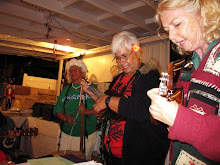



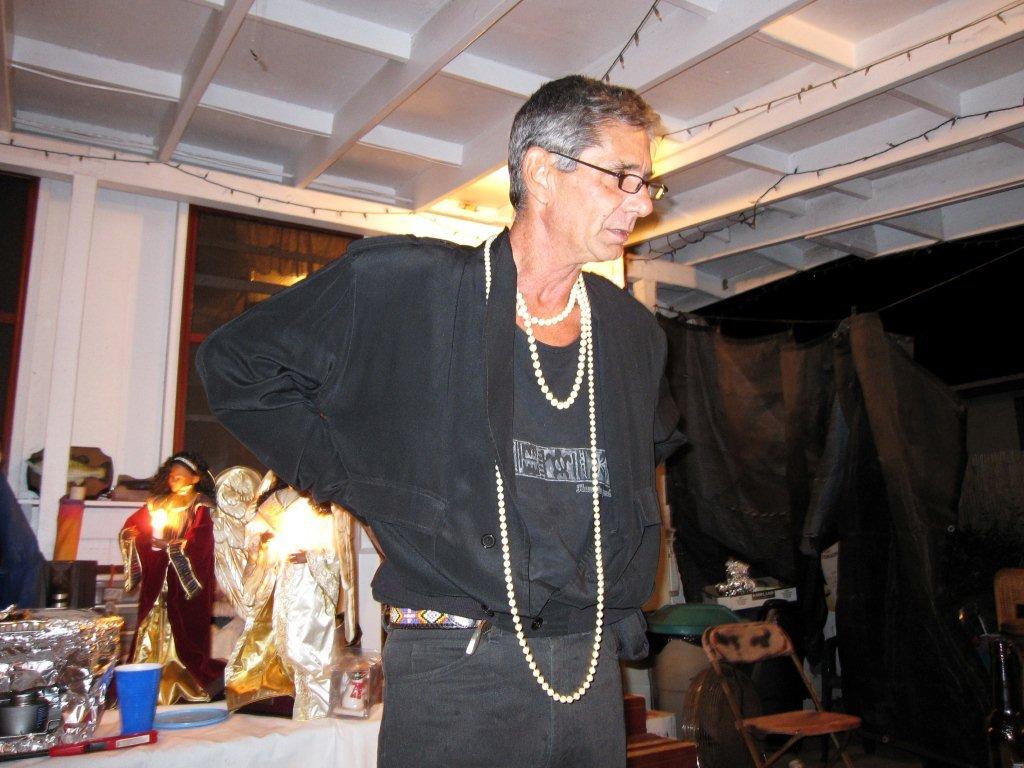
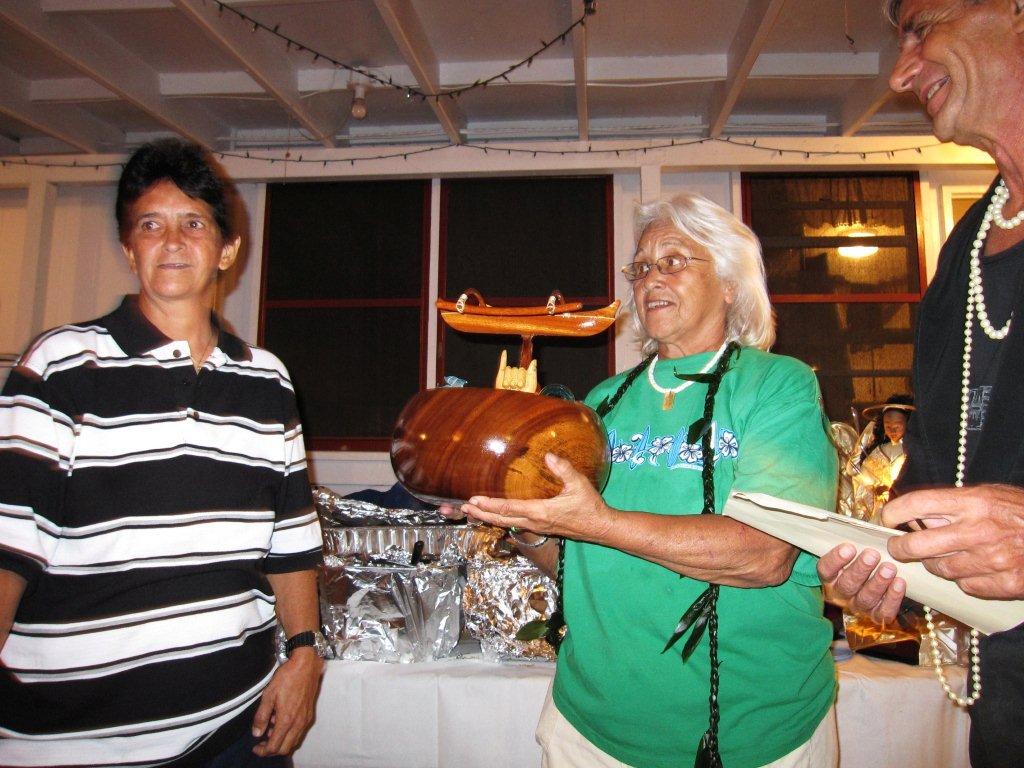






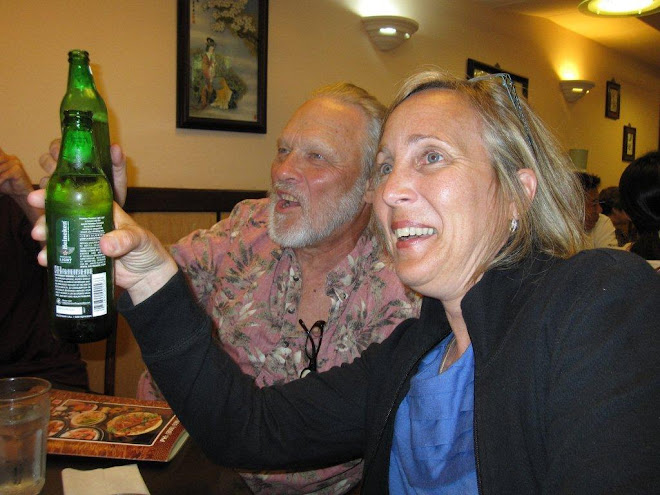

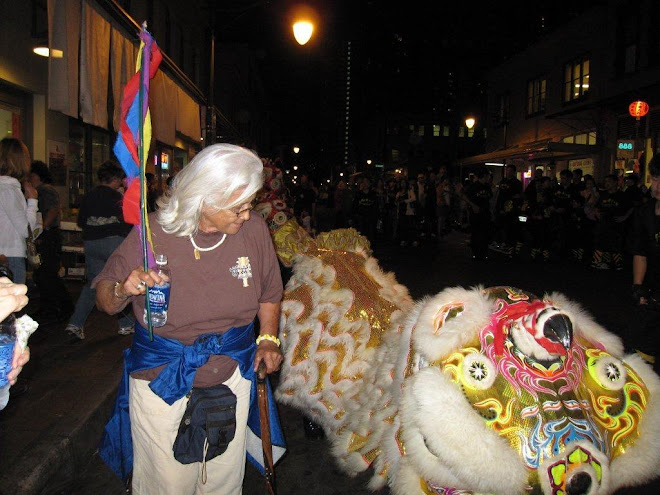
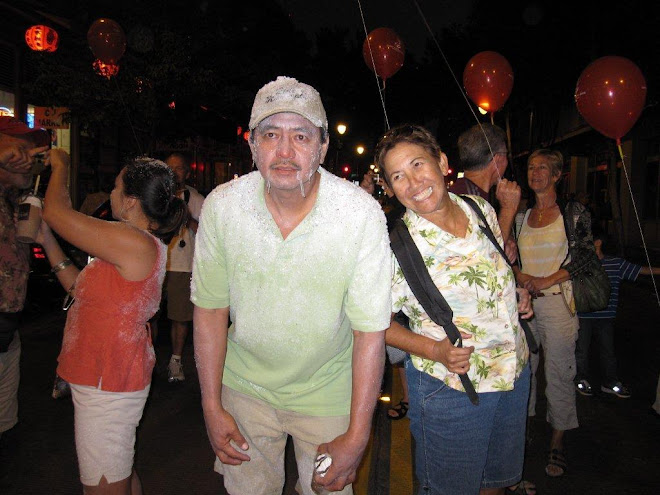
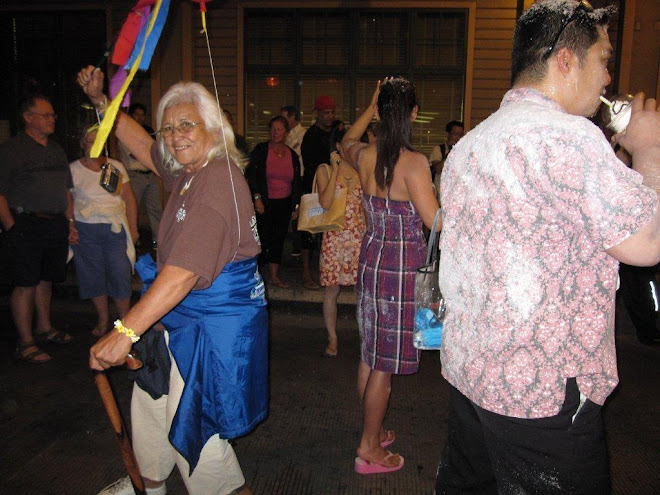

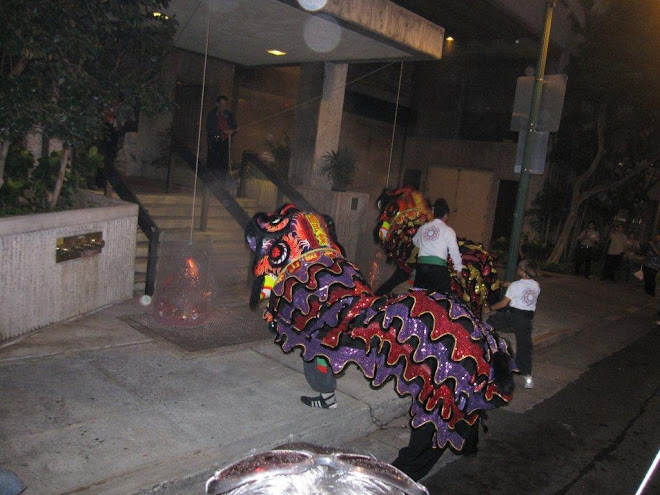
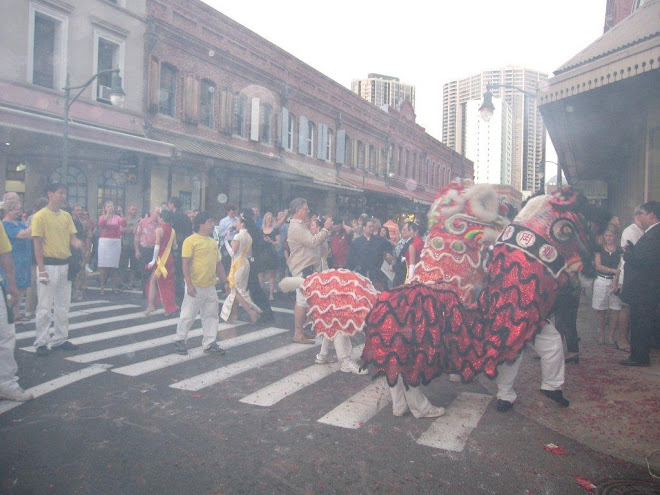
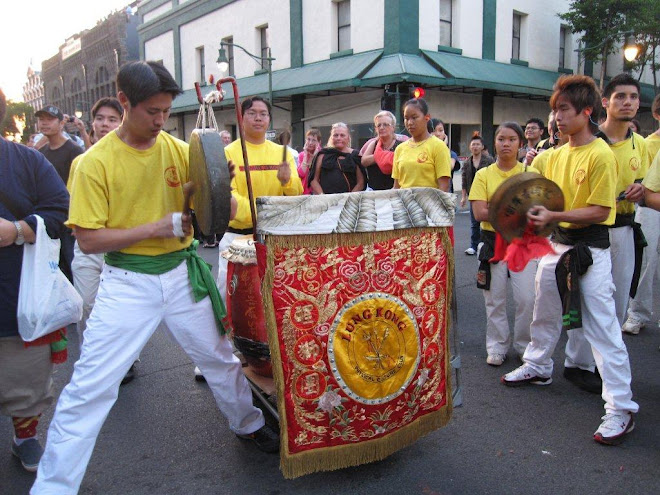

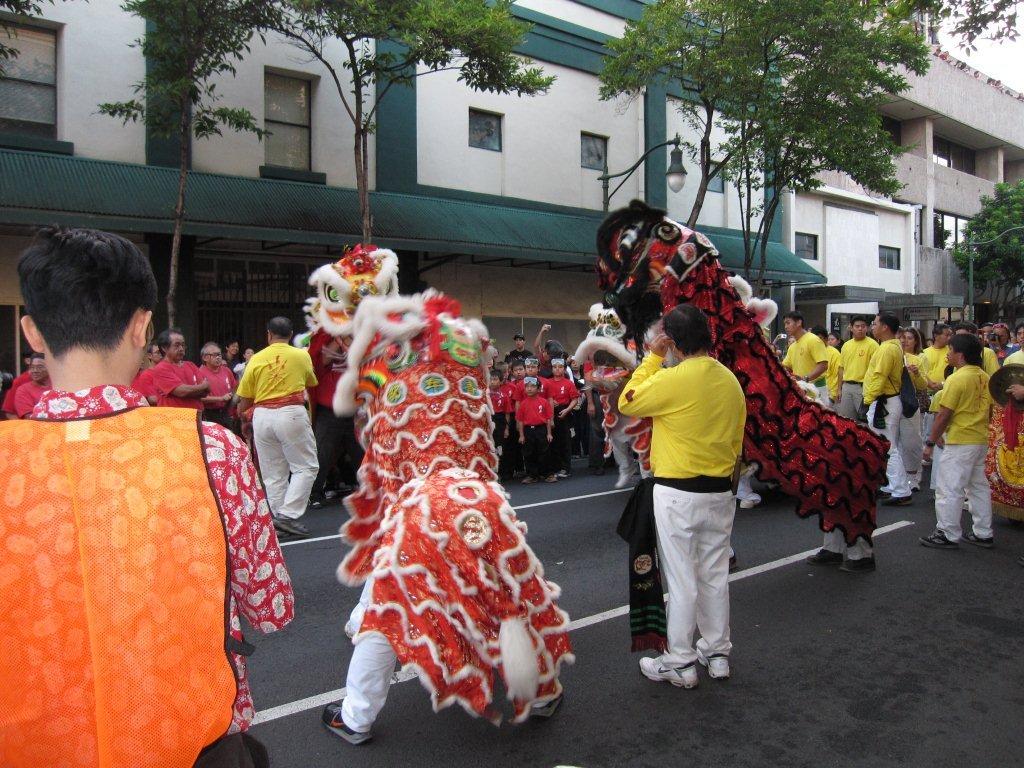



.jpg)
.jpg)
.jpg)
.jpg)
.jpg)

